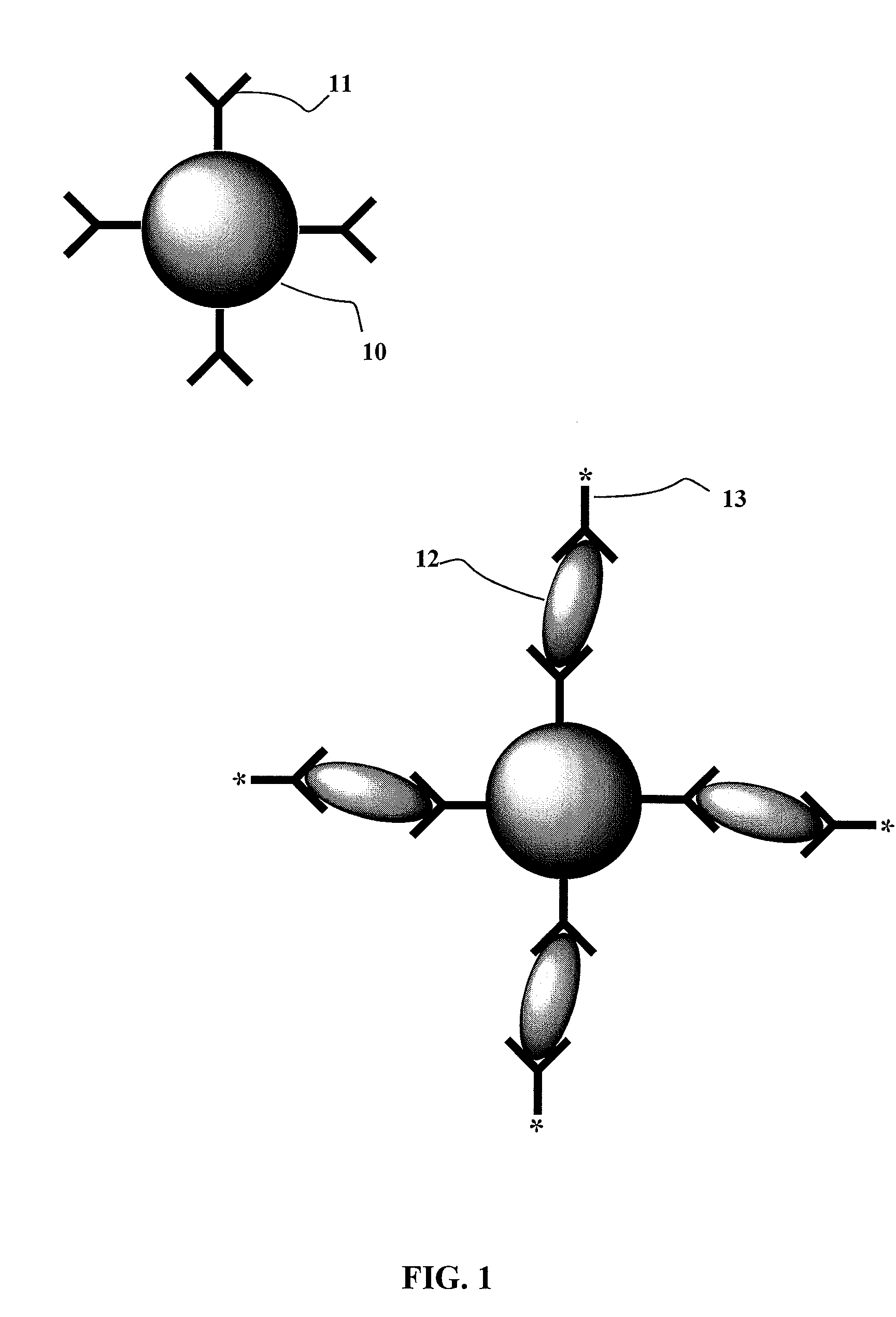Method for the detection and neutralization of bacteria
- Summary
- Abstract
- Description
- Claims
- Application Information
AI Technical Summary
Benefits of technology
Problems solved by technology
Method used
Image
Examples
Embodiment Construction
A. Detection of Bacteria
[0027] The present invention provides methods and compositions for the detection and treatment of bacterial infections. By initial identification of the bacteria associated with an infection, the therapy may be specifically tailored to treat the infection. All bacteria are enclosed by a rigid peptidoglycan cell wall, and the composition of the cell wall varies greatly among different bacteria. This difference provides a basis for the identification of different bacterial species and strains according to the present invention. The peptidoglycan layer is formed from chains of amino sugars, namely N-acetylglucosamine and N-acetylmuramic acid, which are connected by a β-(1,4)-glycosidic bond. Attached to the amino sugars are amino acid chains whose sequence and structure vary among bacterial species. In certain embodiments, the detection involves identification of bacterial species through the use of aptamers that specifically recognize components exposed on the ...
PUM
 Login to View More
Login to View More Abstract
Description
Claims
Application Information
 Login to View More
Login to View More - R&D
- Intellectual Property
- Life Sciences
- Materials
- Tech Scout
- Unparalleled Data Quality
- Higher Quality Content
- 60% Fewer Hallucinations
Browse by: Latest US Patents, China's latest patents, Technical Efficacy Thesaurus, Application Domain, Technology Topic, Popular Technical Reports.
© 2025 PatSnap. All rights reserved.Legal|Privacy policy|Modern Slavery Act Transparency Statement|Sitemap|About US| Contact US: help@patsnap.com

